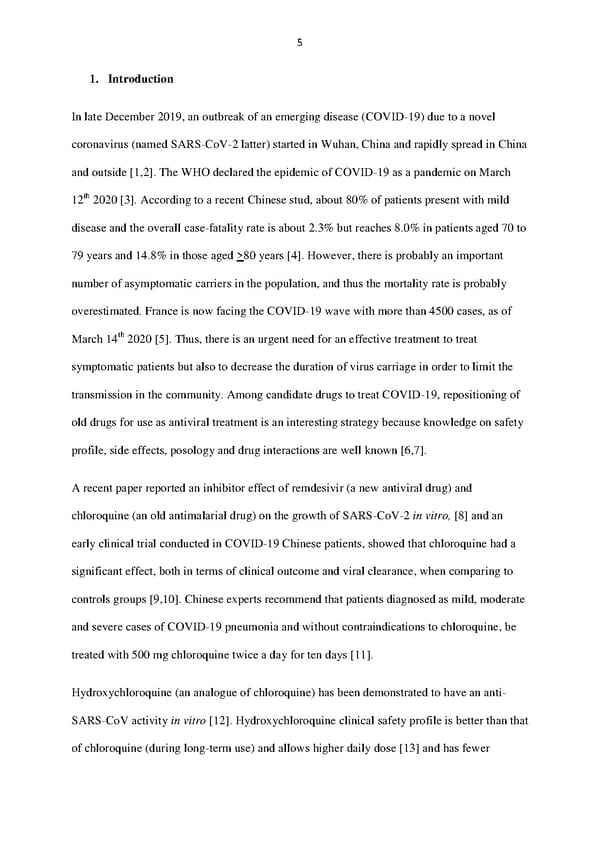5 1. Introduction In late December 2019, an outbreak of an emerging disease (COVID-19) due to a novel coronavirus (named SARS-CoV-2 latter) started in Wuhan, China and rapidly spread in China and outside [1,2]. The WHO declared the epidemic of COVID-19 as a pandemic on March 12th 2020 [3]. According to a recent Chinese stud, about 80% of patients present with mild disease and the overall case-fatality rate is about 2.3% but reaches 8.0% in patients aged 70 to 79 years and 14.8% in those aged >80 years [4]. However, there is probably an important number of asymptomatic carriers in the population, and thus the mortality rate is probably overestimated. France is now facing the COVID-19 wave with more than 4500 cases, as of th March 14 2020 [5]. Thus, there is an urgent need for an effective treatment to treat symptomatic patients but also to decrease the duration of virus carriage in order to limit the transmission in the community. Among candidate drugs to treat COVID-19, repositioning of old drugs for use as antiviral treatment is an interesting strategy because knowledge on safety profile, side effects, posology and drug interactions are well known [6,7]. A recent paper reported an inhibitor effect of remdesivir (a new antiviral drug) and chloroquine (an old antimalarial drug) on the growth of SARS-CoV-2 in vitro, [8] and an early clinical trial conducted in COVID-19 Chinese patients, showed that chloroquine had a significant effect, both in terms of clinical outcome and viral clearance, when comparing to controls groups [9,10]. Chinese experts recommend that patients diagnosed as mild, moderate and severe cases of COVID-19 pneumonia and without contraindications to chloroquine, be treated with 500 mg chloroquine twice a day for ten days [11]. Hydroxychloroquine (an analogue of chloroquine) has been demonstrated to have an anti- SARS-CoV activity in vitro [12]. Hydroxychloroquine clinical safety profile is better than that of chloroquine (during long-term use) and allows higher daily dose [13] and has fewer
 Hydroxychloroquine and Azithromycin as a Treatment of COVID-19 Page 4 Page 6
Hydroxychloroquine and Azithromycin as a Treatment of COVID-19 Page 4 Page 6